Displaying items by tag: Cobh (Queenstown)
#Lusitania100 - A commemoration ceremony hosted by Cunard and the Port of Cork was led by President Michael D Higgins today in Cobh to mark the centenary of the sinking of the Lusitania off the Cork coast.
Shortly after 7am, Cunard liner 'Queen Victoria' arrived at Cobh cruise terminal with 2,144 passengers on board a seven night 'Lusitania Remembered' voyage which included a wreath laying ceremony held off the wreck site in the early hours of this morning.
The commemorations ashore commenced with the unveiling of four glass headstones, commissioned for the centenary by the Port of Cork and Cunard, at the Old Church Graveyard where the bodies of 170 victims of the Lusitania are buried in what were previously unmarked graves.
President Higgins arrived to a full ceremonial welcome shortly after 1pm and proceeded to the town promenade where thousands had gathered.
The whistle of 'Queen Victoria' at 2.10pm marked the moment that the Lusitania was hit by a torpedo 100 years ago. Just 18 minutes later, a second whistle at 2.28pm marked the moment that RMS Lusitania sank with the loss of 1,198 lives.
Many relatives of those who died were in Cobh to remember their loved ones and to pay tribute to the efforts shown by the people of Cobh (then known as Queenstown) in the aftermath of the tragedy.
Speaking about the centenary commemorations, Captain Michael McCarthy, Port of Cork said "The Port of Cork has enjoyed a long relationship with Cunard and all three Cunard Queens have visited Cork harbour in recent years. The Lusitania has particular resonance with Cork and Cobh in that so many of those who lost their lives are buried here. In fact for the last number of years the Port of Cork and Cunard have held a memorial service at the Lusitania monument when a Cunard liner called to Cobh."
He continued "The sinking of the Lusitania was a human catastrophe on a scale that the small town of Cobh (then known as Queenstown) had not experienced before or since and the commemoration is a very fitting tribute to all those who lost their lives on the 7th May 100 years ago. It also serves as an opportunity for us to pay tribute to the people of Cobh, a community which mobilised itself and helped survivors and the dead with such courage and compassion in the aftermath of this tragedy, and to whom we will be forever grateful for their heroic response. "


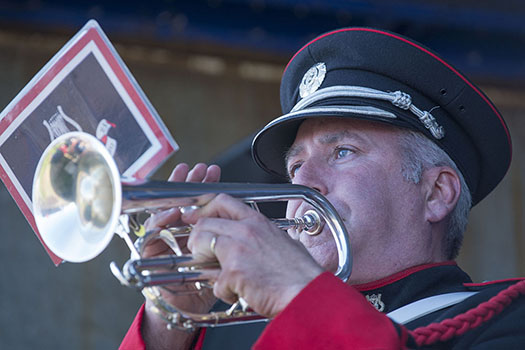
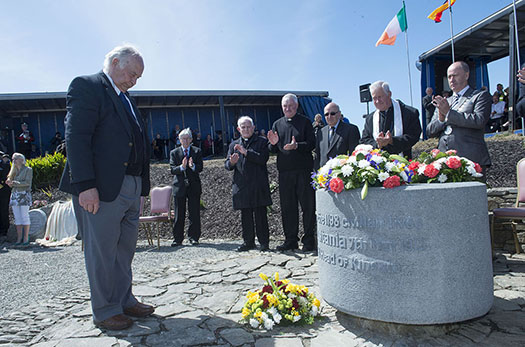
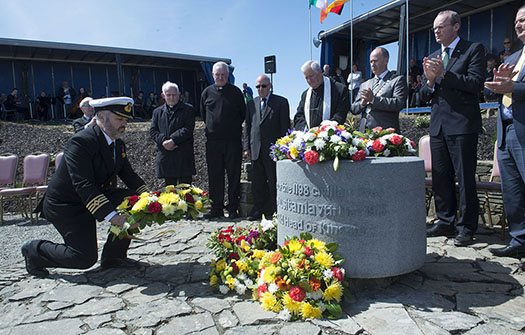
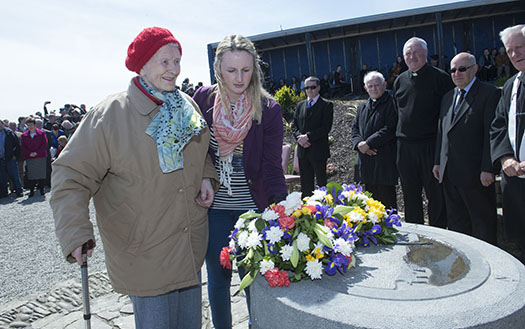
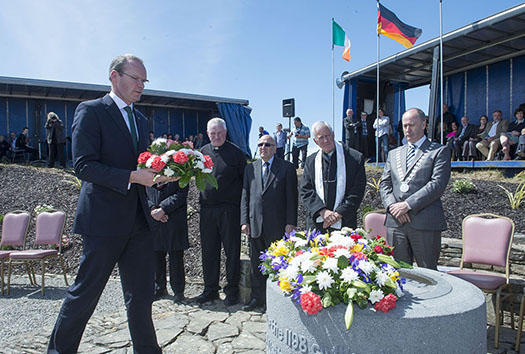
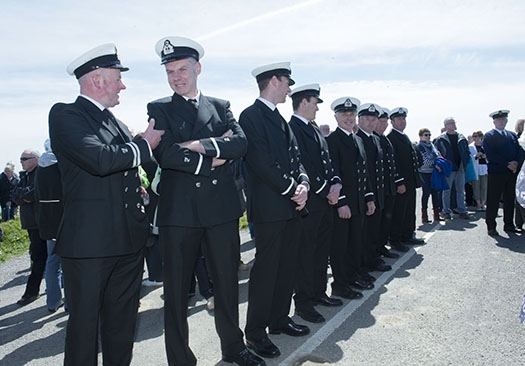
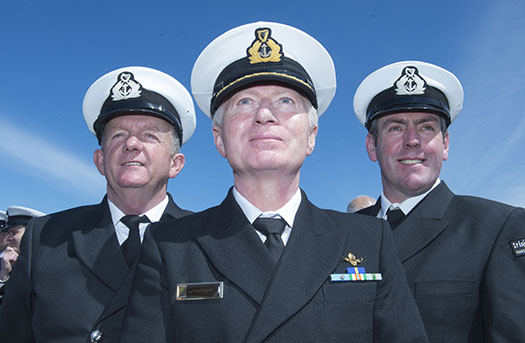
Photos by Gerard McCarthy
Lusitania is still a grave site for hundreds of people that went down with the ship. Let's not forget that these were people and families with hopes and dreams just like ourselves.
What we do know is that on May 7th 1915 the rules of war were deliberately changed in that there were no civilians any more, only targets, and the only thing that would change across every subsequent war was the size and number casualties. It also heralded an era of new and sophisticated weapons of mass destruction and the tactics for their deployment. Many believe the age of 'total war' began off the south coast of Ireland on this day 100 years ago.
Today the Lusitania jealously guards her secrets and soon they will rust into oblivion beyond histories ability to retrieve them.
David Dingle, Chairman of Carnival UK, the owners of Cunard said "Today we remember not only the loss of the Cunard flagship Lusitania and 1,195 lives on 7 May 1915 but also the loss of 20 ships Cunard lost in the First World War.
As well as time to remember it is also an occasion to feel pride in the role Cunarders played when answering the call of their country during that war. And today's commemoration has allowed us to feel both emotions. We will remember them!"
Following the commemoration service in the town promenade, President Higgins laid a wreath at the Lusitania monument along with Commodore Rynd, Master of Queen Victoria; Kevin O'Malley, US Ambassador; Dominick Chilcott, British Ambassador and Wolfram von Heynitz, Chargé d'Affaires German Embassy.
Commemorations continued with a concert by Ryan Morgan, Amanda Neri and Joe Corbett accompanied by the Brandy Lane Orchestra in the town promenade.
























































